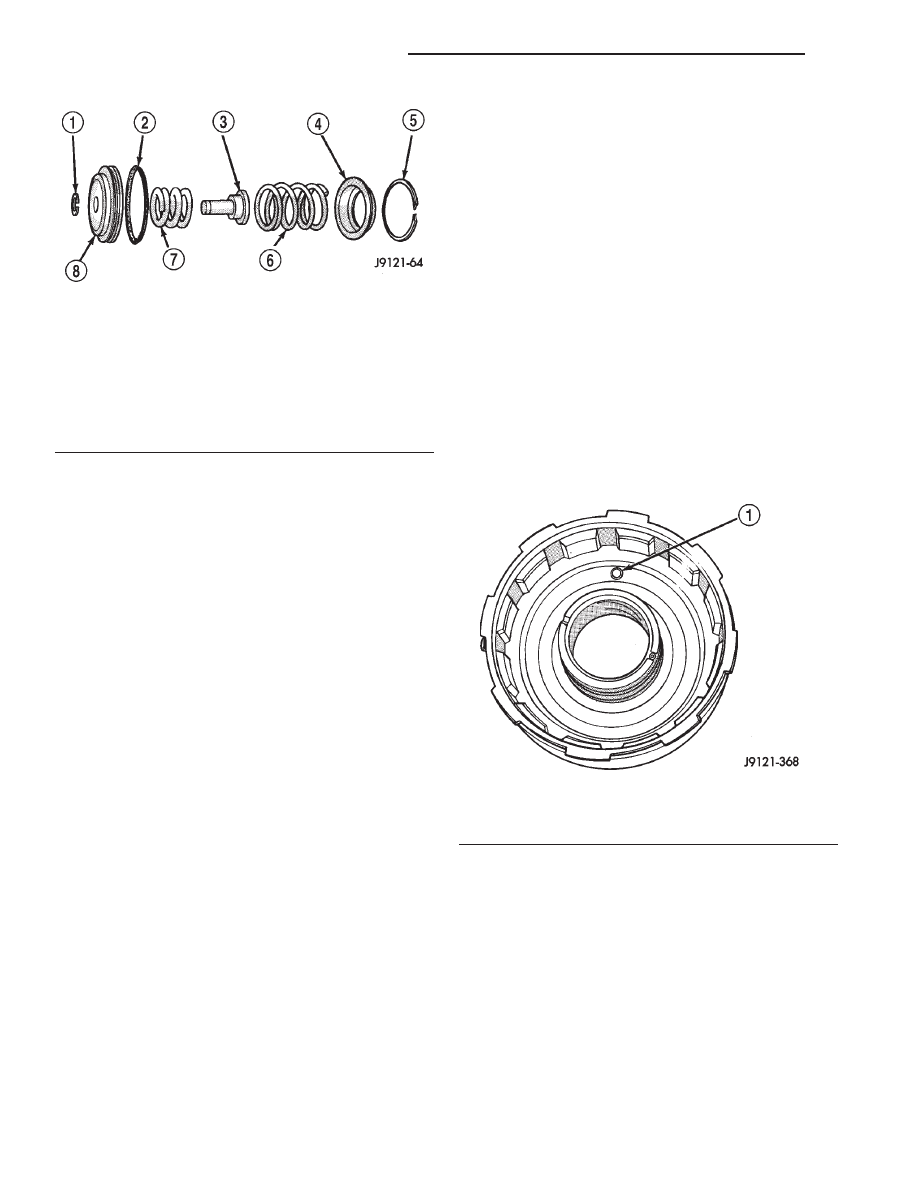Jeep XJ. Manual - part 415

(4) Inspect the pump bushing. Then check the
reaction shaft support bushing. Replace either bush-
ing only if heavily worn, scored or damaged. It is not
necessary to replace the bushings unless they are
actually damaged.
(5) Install the gears in the pump body and mea-
sure pump component clearances as follows:
(a) Clearance between outer gear and reaction
shaft housing should be 0.010 to 0.063 mm (0.0004
to 0.0025 in.). Clearance between inner gear and
reaction shaft housing should be 0.010 to 0.063
mm (0.0004 to 0.0025 in.). Both clearances can be
measured at the same time by:
(I) Installing the pump gears in the pump
housing.
(II) Position an appropriate piece of Plasti-
gage
y across both gears.
(III) Align the plastigage to a flat area on the
reaction shaft housing.
(IV) Install the reaction shaft to the pump
housing.
(V) Separate the reaction shaft housing from
the pump housing and measure the Plastigage
y
following the instructions supplied with it.
(b) Clearance between inner gear tooth and
outer gear should be 0.08 to 0.19 mm (0.0035 to
0.0075 in.). Measure clearance with an appropriate
feeler gauge.
(c) Clearance between outer gear and pump
housing should also be 0.010 to 0.19 mm (0.0035 to
0.0075 in.). Measure clearance with an appropriate
feeler gauge.
FRONT CLUTCH
Clean and inspect the front clutch components.
Replace the clutch discs if warped, worn, scored,
burned or charred, or if the facing is flaking off.
Replace the steel plates if heavily scored, warped, or
broken. Be sure the driving lugs on the plates are in
good condition. The lugs must not be bent, cracked or
damaged in any way.
Replace the clutch spring and spring retainer if
either is distorted, warped or broken.
Check the lug grooves in the clutch retainer. The
steel plates should slide freely in the slots. Replace
the retainer if the grooves are worn or damaged.
Check action of the check ball in the retainer (Fig.
226). The ball must move freely and not stick.
NOTE: Inspect the clutch retainer bushings care-
fully (Fig. 227). The retainer bushings are NOT ser-
viceable. It will be necessary to replace the retainer
if either bushing is scored, or worn.
Inspect the piston and retainer seal surfaces for
nicks or scratches. Minor scratches can be removed
with crocus cloth. However, replace the piston and/or
retainer if the seal surfaces are seriously scored.
REAR CLUTCH
Clean the clutch components with solvent and dry
them with compressed air.
Check condition of the input shaft seal rings. It is
not necessary to remove or replace rings unless they
are broken, cracked, or no longer securely hooked
together.
Inspect the input shaft splines and machined sur-
faces. Very minor nicks or scratches can be smoothed
off with crocus cloth. replace the shaft if the splines
are damaged, or any of the machined surfaces are
severely scored.
Fig. 225 Rear Servo Components
1 – SNAP RING
2 – PISTON SEAL
3 – PISTON PLUG
4 – SPRING RETAINER
5 – SNAP RING
6 – PISTON SPRING
7 – CUSHION SPRING
8 – PISTON
Fig. 226 Front Clutch Piston Retainer Check Ball
Location
1 – RETAINER CHECK BALL
21 - 196
AUTOMATIC TRANSMISSION—30RH
XJ
CLEANING AND INSPECTION (Continued)